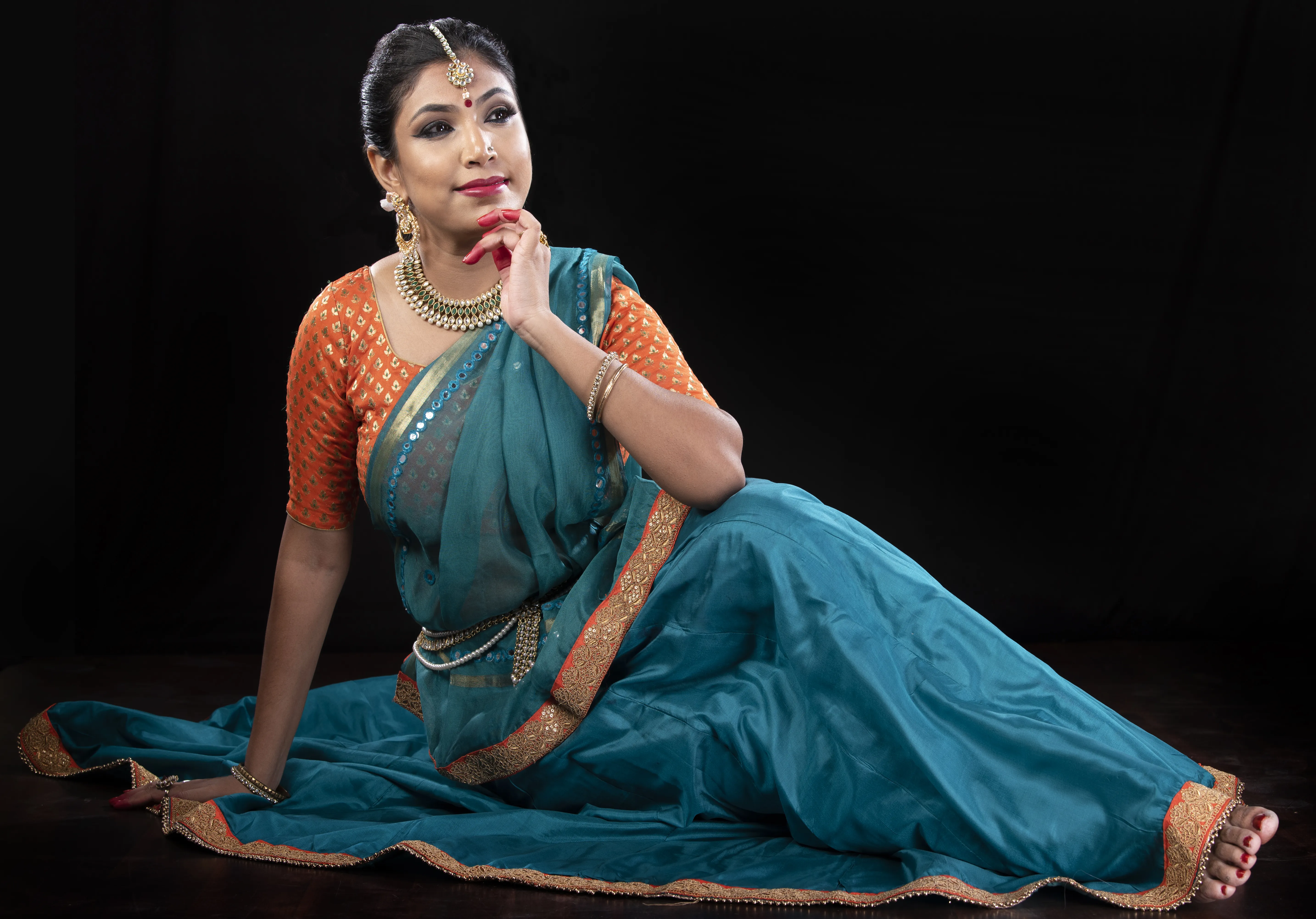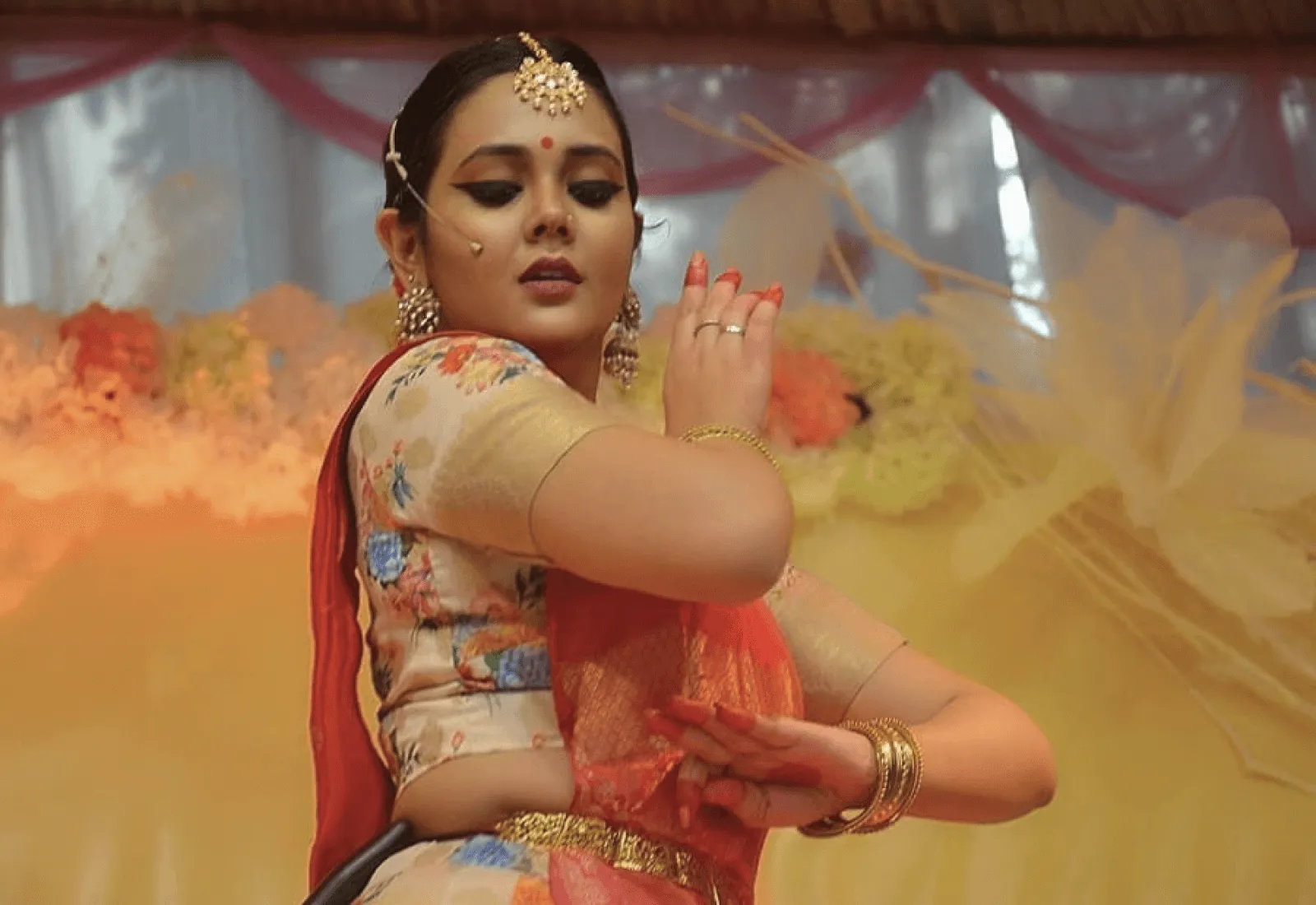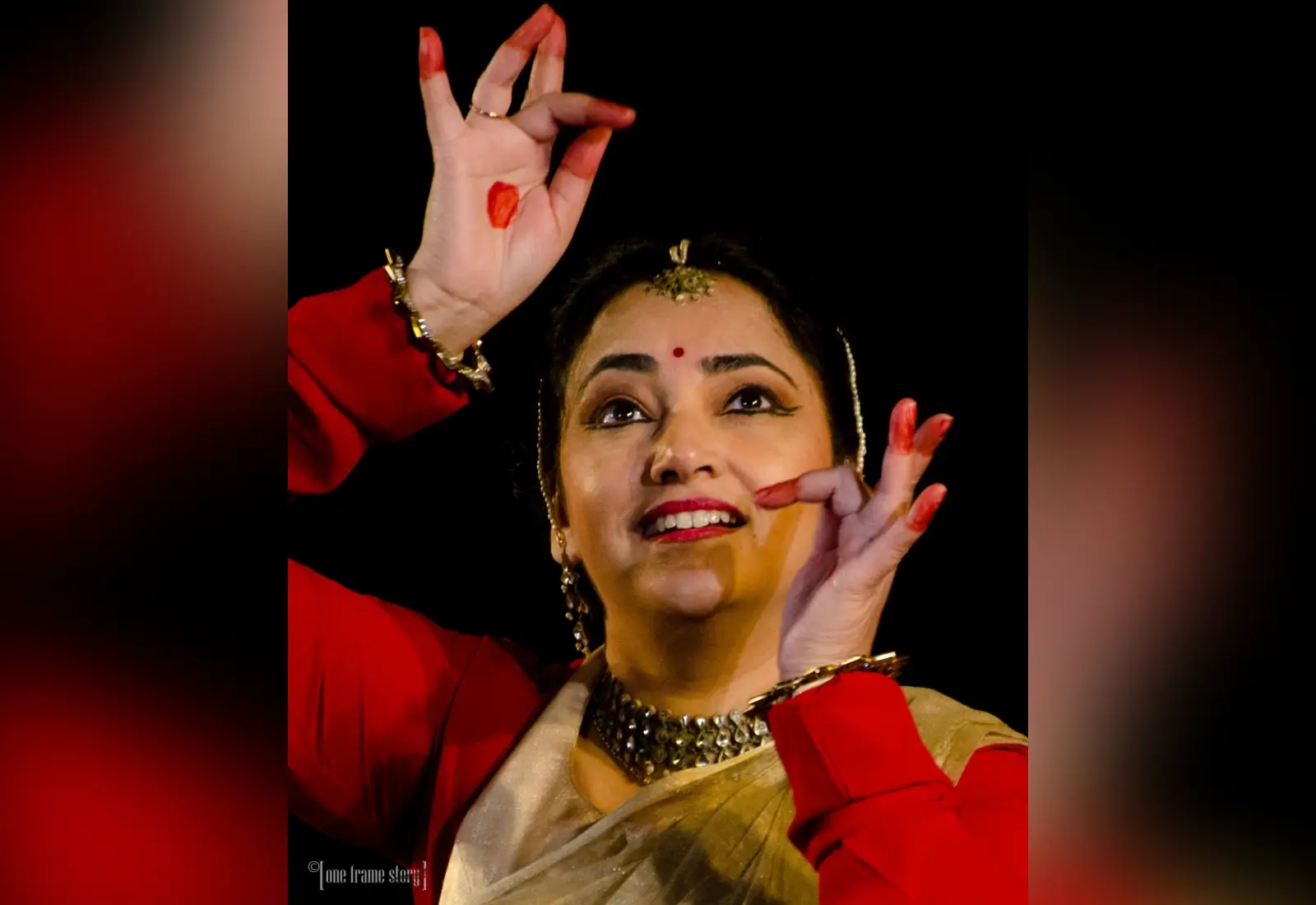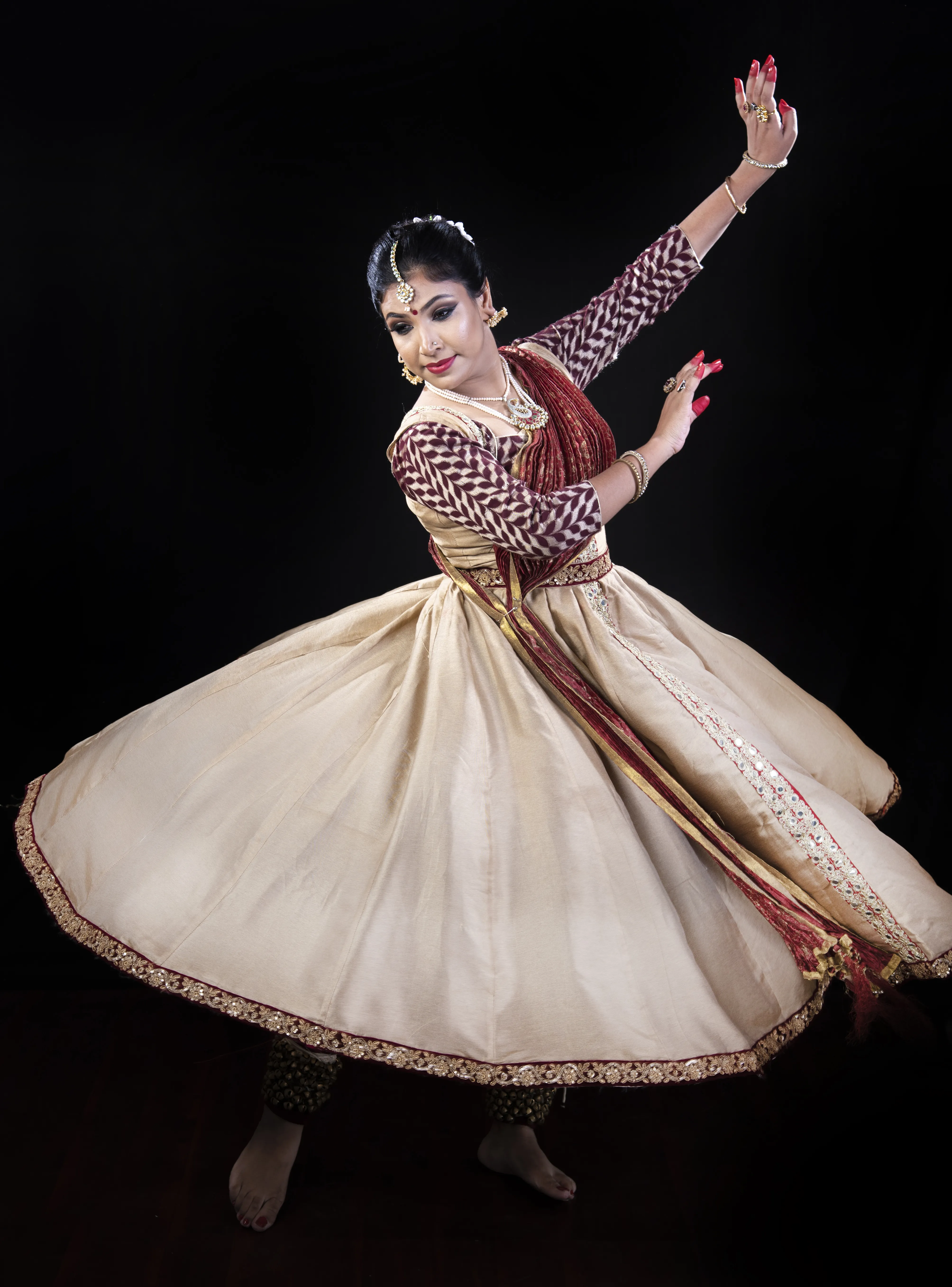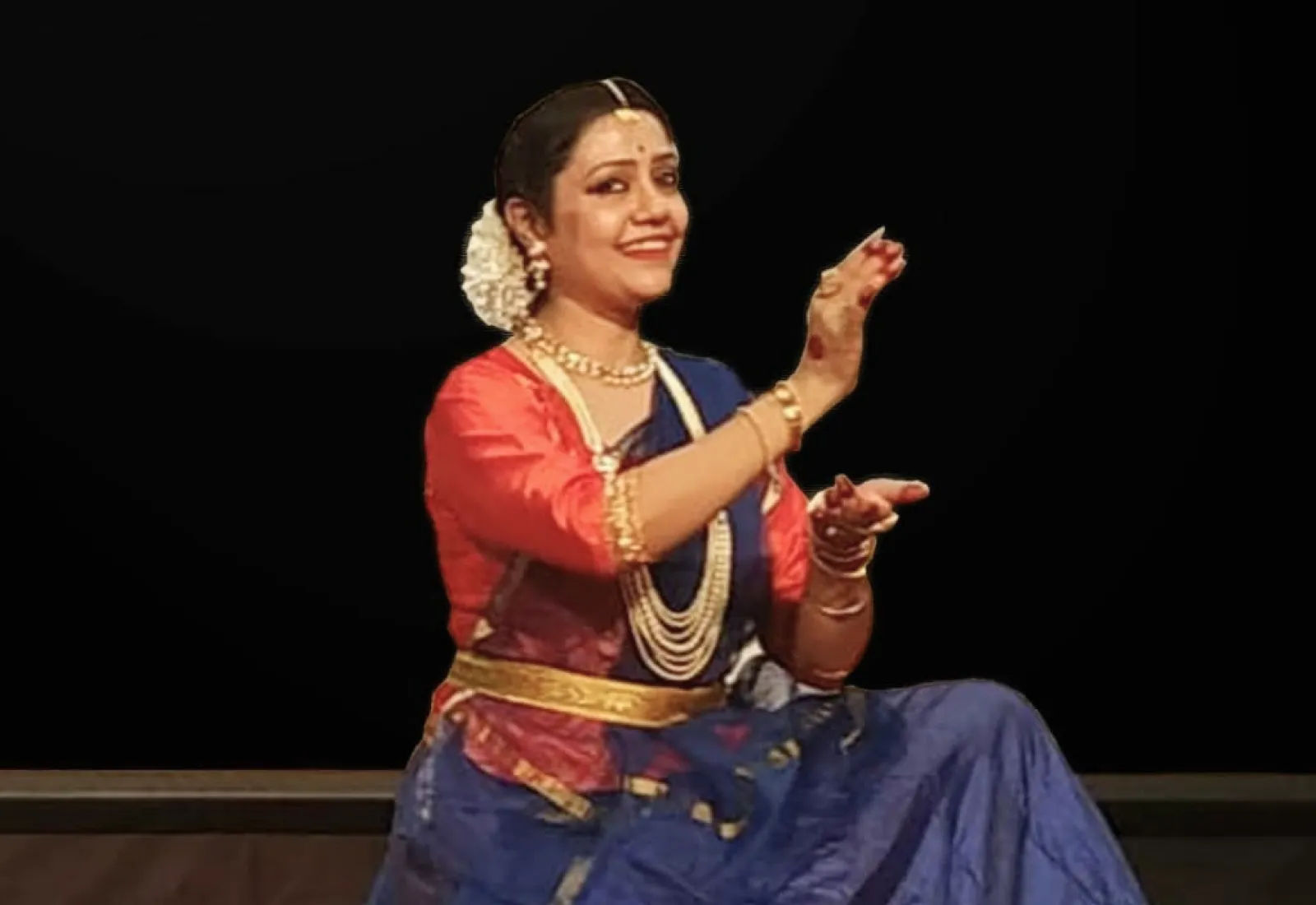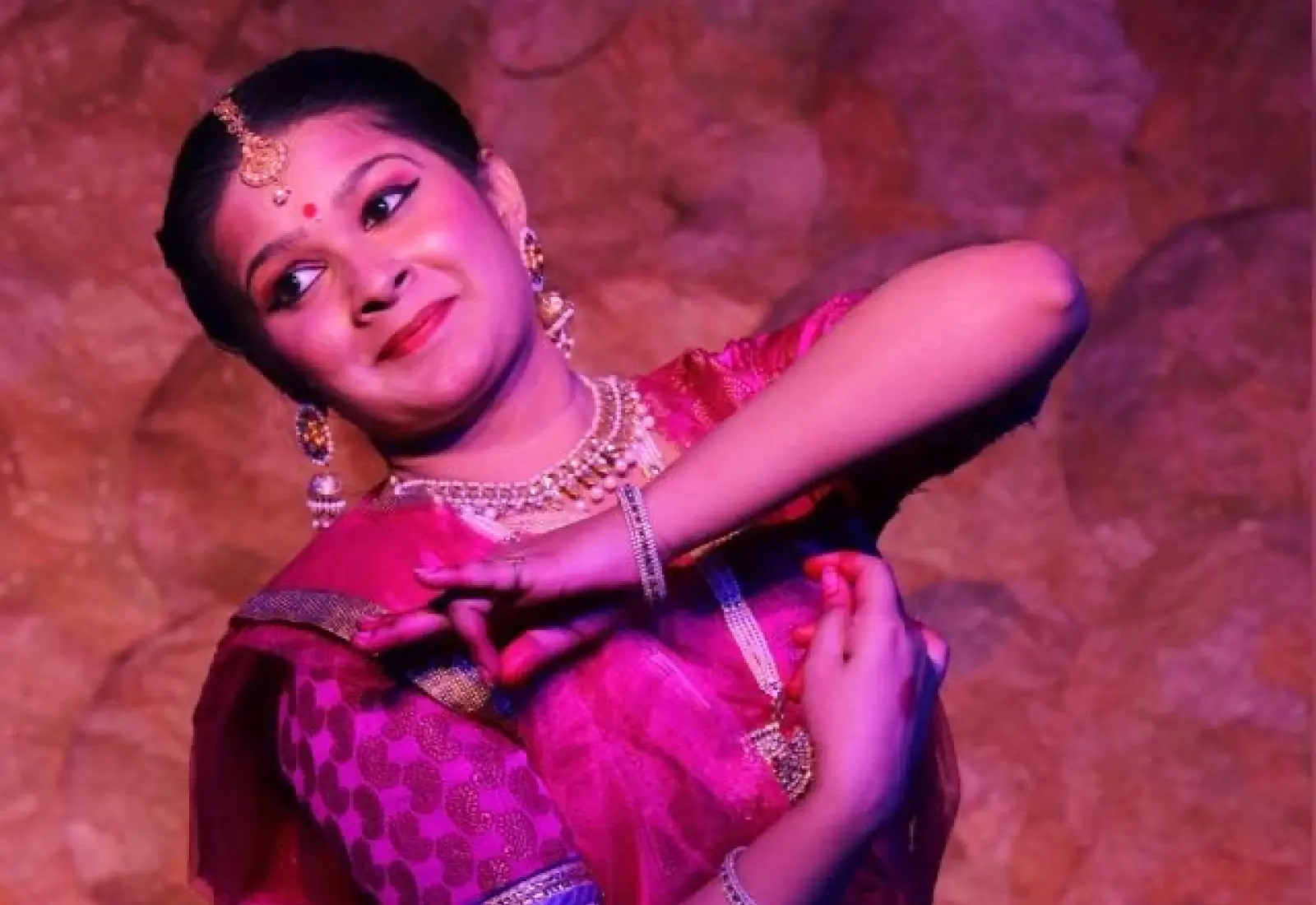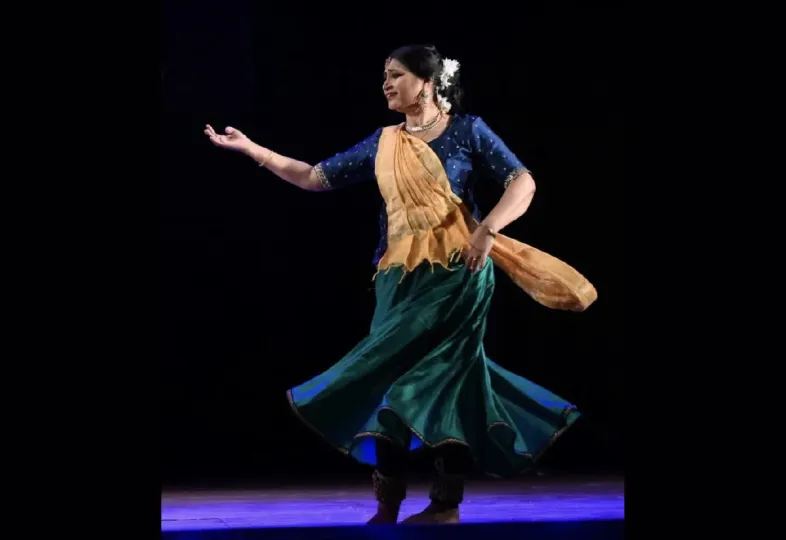5 Easy Kathak Dance Steps for Beginners
Kathak dance is one of the most graceful traditional dance forms in India. What makes the Kathak dance steps and postures so captivating? A unique blend of elegance, precision, and expressiveness.
Kathak features fluid, graceful movements, particularly in the upper body, arms, and hands. Add to this, the Kathak dance steps that include fast-paced foot tapping, made more prominent by the use of ankle bells (ghungroo). It showcases the dancer's technical skill and precision, creating a mesmerizing rhythmic effect.
In this article, we will learn about the Kathak dance steps and other features that make this dance form so captivating.
5 Easy Kathak Dance Moves for Beginners Are:
1. The Upper Body Movements
2. Footwork
3. Bol
4. Hasta Mudra
5. Abhinaya
1. The Upper Body Movements
In Kathak, the upper body moves like a river—smooth, continuous, and full of grace. Every gesture, from the sweep of the arms to the smallest tilt of the head, blends seamlessly into the next. It’s a harmony of strength and softness, precision and freedom. Here the body becomes the language of stories long told but forever new. This lyrical interplay of the arms, hands, and torso brings Kathak its timeless charm.
The beauty of Kathak dance steps is such that the graceful and fluid movements of the upper body are mostly accompanied by very fast footwork. But the visual impact of the same is extremely controlled.
Arms (Hasta)
The arms in Kathak sweep through the air like gentle waves, rising and falling in soft arcs. These motions are not hurried. They are deliberate, creating a sense of calm beauty as if the arms are an extension of the soul’s expression.
Hands (Mudras)
The hands are delicate storytellers in their own right with expressive mudras as their allies. With a flick of the wrist or a subtle shift in fingers, they conjure images of gods and goddesses, trees, rivers, and emotions too deep for words. (This topic has been explored in depth in the later part of this article.)
Torso (Anga)
The torso in Kathak moves with quiet grace, its gentle sways and bends adding rhythm to the stillness. Upright and poised, it carries the strength of the dance, yet when the story calls for it, it leans and curves like a tree bending in the wind. These movements are subtle, almost whisper-like, but they anchor the dancer’s elegance, giving form to the fluidity.
Head and Neck
The head moves like a serene wave, guided by the emotions that fill the dance. A tilt, a glance, a shift in gaze—all are small but significant. The dancer’s eyes follow the journey of the hands, and with each movement, the head and neck lend a softness to the story.
2. Kathak Dance Steps - Footwork
In Kathak, the feet tell a story. They speak in rhythm, tapping out tales and emotions. Each step adds meaning, creating a world of sound and movement.

Tatkar
Tatkar is the heartbeat of Kathak. The feet tap softly, like whispers on the floor. Each step sings: Ta, Thei, Thei, Tat. This is where the rhythm begins, the foundation for every dance.
Tora
Tora is a dance of speed and grace. The feet move in quick patterns, spinning and stepping, all flowing together. A Tora ends on Sam, the first beat, like coming home after a journey.
Tukra
Tukra is a short burst of energy. It’s quick, sharp, and full of life. The dancer’s feet move swiftly, lighting up the stage for just a moment before landing back on Sam.
Chakkar
Chakkar means to spin. The dancer turns like a whirlwind, fast and smooth. Each spin feels endless, yet controlled, as the dancer always finds their way back to the beat.
Paran
Paran brings the power of the drums to the feet. The dancer mimics the rhythms of the tabla, their feet becoming drums themselves. Each step is strong, like a pulse in the music.
Chakradhar Paran
Chakradhar Paran is rhythm repeated, again and again. Three times the feet dance the same pattern, each ending on Sam. It builds, like waves crashing to shore, creating a dramatic finish.
Tihai
Tihai is the final word in a Kathak conversation. The rhythm repeats three times, each one clearer than the last. And then, on the third, it lands perfectly on Sam, bringing the story to its close.
3. Bol - How it Guides the Kathak Dance Steps
The use of bols in Kathak significantly enhances the complexity of footwork, contributing to the dance's rhythmic intricacies and expressive potential. Here’s how bols function in this classical dance form:
Understanding Bols in Kathak
Bols are the heartbeat of Kathak, sounds that guide the dance. They are spoken rhythms, soft syllables that hold the dance together. Each bol tells the dancer what to do, connecting feet to music, and creating patterns in the air.
Rhythmic Precision There is a rhythm in every, a feeling, and a story waiting to be told. Every bol is a step. Each syllable, like ta or thei, directs the feet with perfect accuracy. Even in the fastest, most complex sequences, these sounds ensure every move is sharp and clear.
Improvisation and Creativity Bols unlock creativity. Dancers play with the rhythms, changing patterns as they feel the music. In the moment, they create something new, as their feet talk to the tabla, weaving a dance full of surprises.
Synchronization with Music Bols are the bridge between the dance and the music. The dancer listens to the beats of the tabla, while speaking the bols. Every movement lands in harmony with the music, creating a seamless flow of sound and sight.
Expression of Emotion Bols carry feelings too. By changing the speed and power of the footwork, a dancer can show joy, sadness, or longing. The subtle shifts in rhythm bring emotion to life, touching the hearts of the audience.
Foundation for Complex Patterns Layering bols builds complexity. Multiple rhythms combine, challenging the dancer to master intricate patterns. These rich layers of sound and movement captivate the audience, showcasing the dancer’s skill.
Common Bols in Kathak
Tatkar Bols Ta thei thei tat – the very essence of Tatkar, the foundation of all Kathak footwork. Each sound matches a step, creating a base from which all other rhythms grow.
Tukra Bols Dha dhin dhin dha – these are Tukra bols, short and sharp, used to build quick, lively footwork.
Tihai Bols Dhin dhin dha, dhin dhin dha, dhin dhin dha – repeated three times, these bols bring the dance to a dramatic end, marking the peak of the performance.
Paran Bols Dha dhin dhin dha, tin tin ta ta – these bols are complex, adding spins and powerful movements to the dance, creating a dramatic rhythm.
Torā Bols Dha dha tei tei – used in Torā sequences, they allow for rapid, intricate steps, performed with grace and speed.
Are you thinking about how to master skills at home? Read - How to Learn Kathak at Home. A Step-by-Step Guide.
4. Hasta Mudra
In Kathak, the hands speak. They tell stories, share emotions, and add beauty to every move. These graceful gestures, called Hasta Mudras, are like the language of the dance. They come from ancient texts like the Natyashastra and have been shaped by centuries of tradition.
With each gesture, Kathak dancers paint a picture. They tell tales of gods and goddesses, of kings and animals, of oceans and mountains. The hands show joy, sadness, devotion, and every feeling in between.

Some mudras speak of nature—water flowing, the moon glowing, the sun rising. Others share deeper meanings—power, grace, divinity. Together, these gestures bring the dance alive, weaving emotion and story into the rhythm of footwork, the flash of eyes, and the elegance of movement.
There are two types of Hasta Mudras - Asamayukta and Samayukta.
Asamyukta Hastas (Single-Hand Gestures)
With just one hand, the dancer creates worlds—of objects, actions, and feelings.
Pataka – The palm is flat, open, like a flag waving. It can be the wind, the flowing river, or a blessing from the skies.
Tripataka – A variation, with the ring finger bent. It becomes a crown, a tall tree, or a flickering flame.
Ardhapataka – Here, the little finger bends too. It shows the graceful sweep of a river or the soft flutter of leaves.
Kartari Mukha – A pair of scissors in motion, cutting through air like lightning, or parting ways in sorrow.
Mayura – Thumb and ring finger meet, forming a peacock—an elegant bird, a symbol of beauty.
Ardhachandra – The thumb stretches out, and the hand becomes the half-moon or the act of holding a treasure close.
Mushti – A strong fist, closed and firm. It speaks of power, strength, and holding on.
Shikhara – The thumb stands tall, the fist steady. It can be a bow, a pillar, or the mighty Lord Shiva himself.
Kapittha – The thumb and index finger form a circle, a sign of goddesses like Lakshmi or Saraswati.
Katakamukha – A pinching gesture, delicate and precise. It picks flowers, holds garlands, or offers something precious.
Suchi – The index finger points forward, sharp like a needle, showing one single thing in focus.
Chandrakala – A crescent moon is formed with the thumb and finger, glowing in the dance, lighting up the night.
Samyukta Hastas (Double-Hand Gestures)
Two hands together, for deeper ideas and bigger stories.
Anjali – Palms press together in prayer, a gesture of respect, a moment of offering.
Shivalinga – One hand makes a fist, the other cups it gently below, a symbol of Lord Shiva, holding the divine in form.
Pushpaputa – Open palms face upwards, ready to offer flowers, gifts from the heart, soft and pure.
Kataka Vardhana – Both hands form circles with thumb and finger, showing unity, a blessing that brings everything together.
Karkata – Fingers interlock like a mountain, strong and steady, holding something vast and unmovable.
Makara – The shape of a crocodile, powerful and ancient, a creature of myth and water.
5. Abhinaya
Abhinaya, a Sanskrit term meaning "expression." Performers convey emotions, narratives, and character portrayals through a combination of gestures, facial expressions, and body movements. Abhinaya is the heart and soul of Kathak. It helps the dancers to connect deeply with their audience. Here’s an in-depth exploration of the role of Abhinaya in Kathak -
Abhinaya is traditionally categorized into four main types. Each of these part contribute to the overall expressive quality of Kathak:
Angika Abhinaya
It involves the use of body movements, including the limbs, torso, and facial expressions. Angika Abhinaya allows dancers to express emotions through physicality.
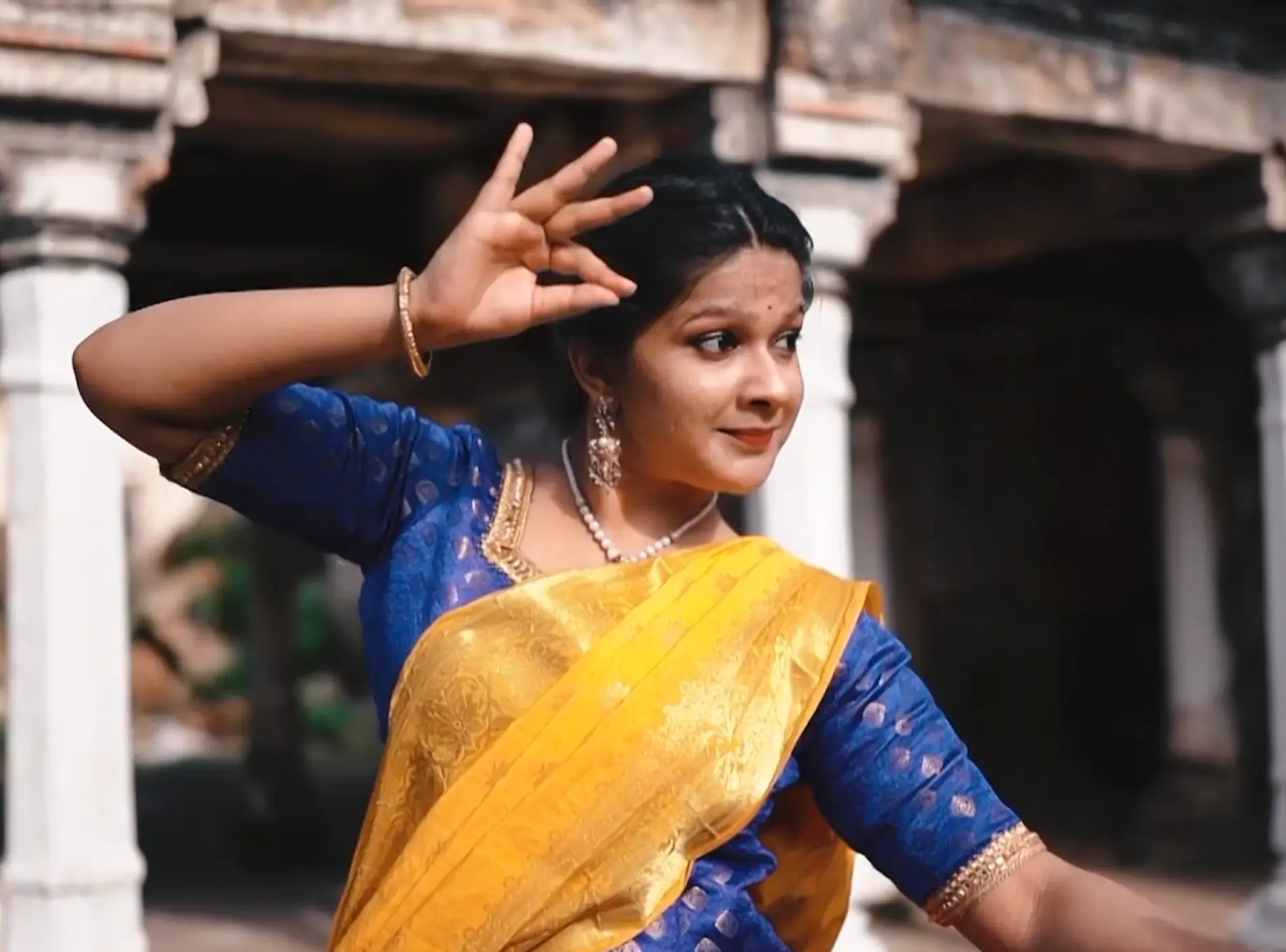
For instance, movements such as graceful spins (chakkars) or dynamic footwork can symbolize various feelings or narrative elements.
The subtle movements of the face—such as eye rolls or eyebrow raises—enhance the emotional depth and help convey specific sentiments like joy, sorrow, or longing.
Vachika Abhinaya
This refers to expression through speech or song. But how? Dance is a non-verbal communication. True. But Vachika Abhinaya gets incorporated through lip-syncing to lyrics or poetry recitals to complement the Kathak dance moves. This adds an auditory layer to the performance. It enriches the storytelling aspect by providing context and emotional resonance.
Aharya Abhinaya
Costumes, makeup, and stage setting help effective delivery of Abhinaya. They define characters and enhance the visual appeal of the performance. Characters and situations within a narrative are etched through these aesthetic elements.
Sattvika Abhinaya
Sattvika Abhinaya is considered one of the most challenging aspects to master. It requires dancers to evoke genuine emotions from within. This internal connection enhances the authenticity of their performance. It allows spectators to experience a range of emotions alongside the dancer.
Abhinaya enables dancers to narrate stories from Indian mythology, folklore, or personal experiences. Abhinaya fosters a deep emotional connection between the dancer and the audience. By conveying feelings such as love (Shanta), anger (Raudra), or compassion (Karuna), dancers invite spectators into an emotional journey that transcends language barriers.
Concluding: The 5 Basic Kathak Dance Steps
In Kathak, five key features come together to create the grace and grandeur the dance is known for. The upper body movements bring fluidity and elegance, while the rhythmic precision of footwork grounds the dance in intricate patterns. Using bols, or rhythmic syllables, adds complexity and helps dancers synchronize with music, while hasta mudras (hand gestures) enrich the storytelling with symbolic meaning. At the heart of it all is abhinaya, the art of expression, allowing dancers to convey deep emotions and narratives. Together, these elements form a harmonious blend, making Kathak a captivating dance form that beautifully intertwines technical skill, cultural richness, and emotional depth.
If you’re inspired to learn this exquisite art form, explore online Kathak classes.


